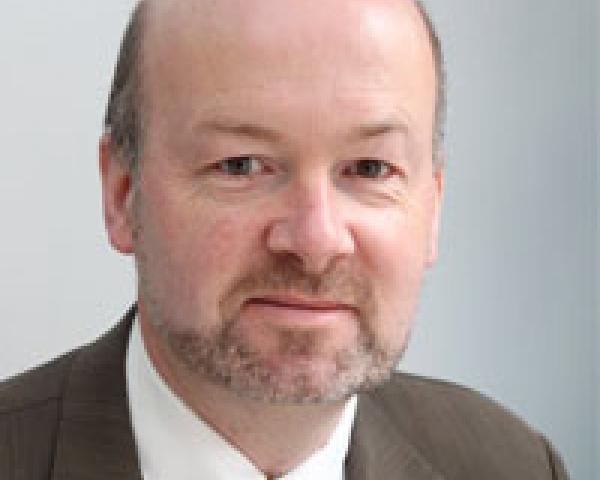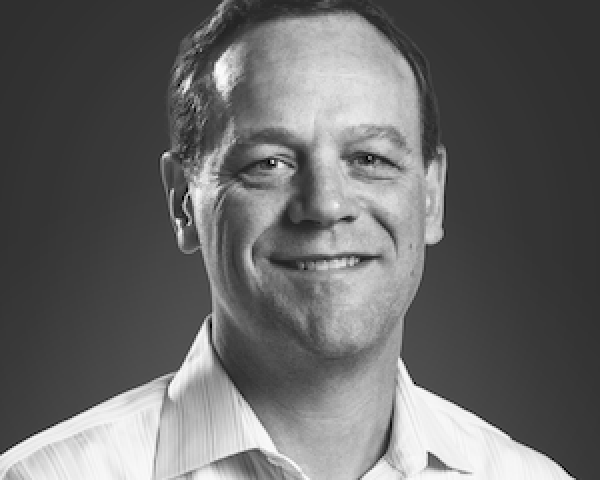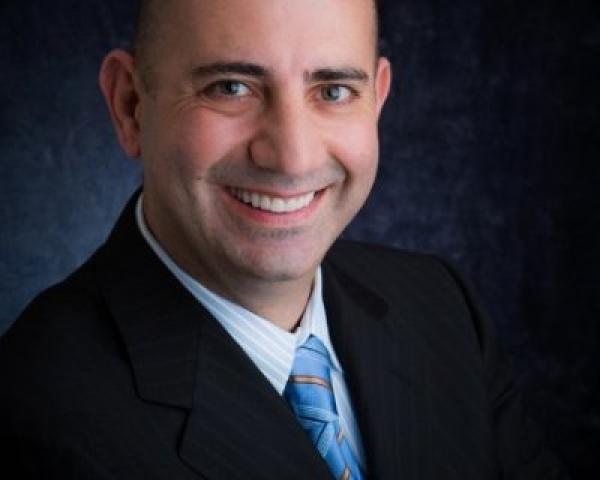Most Controversial Claims Innovation
The innovation -- claims optimization -- requires quite a number of radical assumptions about what insurance is there to do and how it should do it.

The innovation -- claims optimization -- requires quite a number of radical assumptions about what insurance is there to do and how it should do it.

Get Involved
Our authors are what set Insurance Thought Leadership apart.
|
Partner with us
We’d love to talk to you about how we can improve your marketing ROI.
|

Duncan Minty is an independent ethics consultant with a particular interest in the insurance sector. Minty is a chartered insurance practitioner and the author of ethics courses and guidance papers for the Chartered Insurance Institute.
Bad actors cause significant problems for lead buyers, but industry-wide use of technology can tackle the issue.

Get Involved
Our authors are what set Insurance Thought Leadership apart.
|
Partner with us
We’d love to talk to you about how we can improve your marketing ROI.
|

Jaimie Pickles is co-founder and CEO at First Interpreter.
He was previously general manager, insurance, at Jornaya, which analyzes consumer leads for insurance and other industries. Before that, he was president and founder of Canal Partner, a digital advertising technology company, and president of InsWeb, an online insurance marketplace.
How can the 2016 results at AIG be explained? Could the recent emphasis on technology, among other things, have caused a loss of focus?

Get Involved
Our authors are what set Insurance Thought Leadership apart.
|
Partner with us
We’d love to talk to you about how we can improve your marketing ROI.
|

Donna Galer is a consultant, author and lecturer.
She has written three books on ERM: Enterprise Risk Management – Straight To The Point, Enterprise Risk Management – Straight To The Value and Enterprise Risk Management – Straight Talk For Nonprofits, with co-author Al Decker. She is an active contributor to the Insurance Thought Leadership website and other industry publications. In addition, she has given presentations at RIMS, CPCU, PCI (now APCIA) and university events.
Currently, she is an independent consultant on ERM, ESG and strategic planning. She was recently a senior adviser at Hanover Stone Solutions. She served as the chairwoman of the Spencer Educational Foundation from 2006-2010. From 1989 to 2006, she was with Zurich Insurance Group, where she held many positions both in the U.S. and in Switzerland, including: EVP corporate development, global head of investor relations, EVP compliance and governance and regional manager for North America. Her last position at Zurich was executive vice president and chief administrative officer for Zurich’s world-wide general insurance business ($36 Billion GWP), with responsibility for strategic planning and other areas. She began her insurance career at Crum & Forster Insurance.
She has served on numerous industry and academic boards. Among these are: NC State’s Poole School of Business’ Enterprise Risk Management’s Advisory Board, Illinois State University’s Katie School of Insurance, Spencer Educational Foundation. She won “The Editor’s Choice Award” from the Society of Financial Examiners in 2017 for her co-written articles on KRIs/KPIs and related subjects. She was named among the “Top 100 Insurance Women” by Business Insurance in 2000.
If we can escape the focus on incremental innovation, computing pioneer Alan Kay says, we can gain “unbelievable leverage on the universe.”

It was like a magnet on the horizon. I had a lot of ideas but no really cosmic ones until that point.This led Kay to wonder how computers could form a new kind of reading and writing medium that enabled important and powerful ideas to be discussed, played with and learned. But, the hottest computers at the time were IBM 360 mainframes costing millions. The use of computers in educating children was almost nonexistent. And, there were no such things as personal computers. 2. Apply favorable exponentials To break the tyranny of current assumptions, identify exponential improvements in technological capabilities that could radically alter the range of possible approaches. In 1965, Gordon Moore made his observation that computing would dramatically increase in power, and decrease in relative cost, at an exponential pace. Moore’s prediction, which would become known as Moore’s Law, was the “favorable exponential” that Kay applied. Today, the fruits of Moore’s Law such as mobile devices, social media, cloud computing, big data, artificial intelligence and the Internet of Things continue to offer exponential advances favorable for invention. As I’ve previously written, these are make-or-break technologies for all information-intensive companies. But, don’t limit yourself to those. Kay is especially optimistic about the favorable exponential at the intersection of computer-facilitated design, simulation and fabrication. This is the process of developing concepts and ideas using computer design tools and then testing and evolving them using computer-based simulation tools. Only after extensive testing and validation are physical components ever built, and, when they are, it can be done through computer-mediated fabrication, including 3D printing. This approach applies to a wide range of domains, including mechanical, electrical and biological systems. It is becoming the standard method for developing everything, including car parts and whole cars, computer algorithms and chips, and even beating nature at its own game. Scientists and engineers realize tremendous benefits in terms of the number of designs that can be considered and the speed and rigor with which they can do so. These allow, Kay told me, “unbelievable leverage on the universe.” See also: To Shape the Future, Write Its History 3. Project the need 30 years out and imagine what might be possible in the context of the exponential curves 30 years is so far in the future that you don’t have to worry about how to get out there. Focus instead on what is important to have. There’s no possibility of being forced to demonstrate or prove how to get there incrementally. Asking “How is this incremental to the present?” is the “biggest idea killer of all time,” Kay says. The answer to the “incremental” question is, he says, is “Forget it. The present is the least interesting time to live in.” Instead, by projecting 30 years into the future, the question becomes, “Wouldn’t it be ridiculous if we didn’t have this?” Projecting out what would be “ridiculous not to have” in 30 years led to many visionary concepts that earned Kay wide recognition as “the father of the personal computer.” He was sure, for example, that children would have ready access to laptop and tablets by the late 1990s — even though personal computers did not yet exist. As he saw it, there was a technological reason for it, there were user reasons for it and there were educational reasons for it. All those factors contributed to his misty vision, and he didn’t have to prove it because 30 years was so far in the future. How might the world look relative to the needs that you smell out? What will you have ready access to in a world with a million times greater computing power, cheap 3D fabrication, boundless energy and so on? Remember, projecting to 2050 is intended as a mind-stretching exercise, not a precise forecasting one. This is where romance lives, albeit romance underpinned by deep science rather than pure fantasy. 4. Create a 30-year vision A vision is different from a mission or a goal. If the previous step was about romance, a 30-year vision is more like a dream. It is a vague picture of a desirable future state of affairs in that 30-year future. This is the step where Kay’s recognition that computers would be widely available by the late 1990s turned into a vision of what form those computers might take. That vision included the Dynabook, a powerful and portable electronic device the size of a three-ring notebook with a touch-sensitive liquid crystal screen and a keyboard for entering information. Here’s one of Kay’s early sketches of the Dynabook from that time. [caption id="attachment_25314" align="alignnone" width="450"]
 DynaBook Concept Drawing[/caption]
The next illustration is Kay’s sketch of the Dynabook in use. He describes the scenario as two 12-year-olds learning about orbital dynamics from a version of “Space Wars” that they wrote themselves. They are using two personal Dynabooks connected over a wireless network.
[caption id="attachment_25301" align="alignnone" width="500"]
DynaBook Concept Drawing[/caption]
The next illustration is Kay’s sketch of the Dynabook in use. He describes the scenario as two 12-year-olds learning about orbital dynamics from a version of “Space Wars” that they wrote themselves. They are using two personal Dynabooks connected over a wireless network.
[caption id="attachment_25301" align="alignnone" width="500"] Children Using Dynabooks[/caption]
Kay’s peers in the ARPA community had already envisioned some of the key building blocks for the Dynabook, such as LCD panels and an Internet-like, worldwide, self-healing network. (For a fascinating history of the early ARPA community, see Mitchell Waldrop’s brilliant book, "The Dream Machine.")
For Kay, these earlier works crystallized into the Dynabook once he thought about them in the context of children’s education. As he described it,
Children Using Dynabooks[/caption]
Kay’s peers in the ARPA community had already envisioned some of the key building blocks for the Dynabook, such as LCD panels and an Internet-like, worldwide, self-healing network. (For a fascinating history of the early ARPA community, see Mitchell Waldrop’s brilliant book, "The Dream Machine.")
For Kay, these earlier works crystallized into the Dynabook once he thought about them in the context of children’s education. As he described it,
The Dynabook was born when it had that cosmic purpose.Laptops, notebook computers and tablets have roots in the early concepts of the Dynabook. 5. Pull the 30-year vision back into a 10- to 15-year lesser vision Kay points out that one of the powerful aspects of computing is that, if you want to live 10 to 15 years in the future, you can do it. You just have to pay 10 to 20 times as much. That’s because tomorrow’s everyday computers can be simulated using today’s supercomputers. Instead of suffering the limitations of today’s commodity computers (which will be long obsolete before you get to the future you are inventing), inventors should use customized supercomputers to prototype, test and evolve aspects of their 30-year vision. Pulling back into the 10- to 15-year window brings inventors back from the “pie in the sky” to something more concrete. Jumping into that “more concrete” future is exactly what Alan Kay did in 1971 when he joined the Xerox Palo Alto Research Center (PARC) effort to build “the office of the future.” It started with Butler Lampson and Chuck Thacker, two of PARC’s leading engineers, asking Kay, “How would you like us to build your little machine?” The resulting computer was an “interim Dynabook,” as Kay thought of it, but better known as the Xerox Alto. [caption id="attachment_25302" align="alignnone" width="500"]
 Xerox Alto[/caption]
The Alto was the hardware equivalent of the Apple Macintosh of 1988, but running in 1973. Instead of costing a couple of thousand dollars each, the Alto cost about $70,000 (in today’s dollars). PARC built 2,000 of them — thereby providing Kay and his team with the environment to develop the software for a 15-year, lesser-but-running version of his 30-year vision.
6. Compute in the future
Now, having created the computing environment of the future, you can invent the software. This approach is critical because the hardest thing about software is getting from requirements and specification to properly running code.
Much of the time spent in developing software is spent optimizing code for the limitations of the hardware environment—i.e., making it run fast enough and robust enough. Providing a more powerful, unconstrained futuristic computing environment frees developers to focus on invention rather than optimization. (This was the impetus for another Kay principle, popularized by Steve Jobs, that “People who are really serious about software should make their own hardware.”)
The Alto essentially allowed PARC researchers to simulate the laptop of the future. Armed with it, Kay was a visionary force at PARC.
Kay led the Learning Research Group at PARC, and, though PARC’s mission was focused on the office environment, Kay rightly decided that the best path toward that mission was to focus on children in educational settings. He and his team studied how children could use personal computers in different subject areas. They studied how to help children learn to use computers and how children could use computers to learn. And, they studied how the computers needed to be redesigned to facilitate such learning.
[caption id="attachment_25303" align="alignnone" width="500"]
Xerox Alto[/caption]
The Alto was the hardware equivalent of the Apple Macintosh of 1988, but running in 1973. Instead of costing a couple of thousand dollars each, the Alto cost about $70,000 (in today’s dollars). PARC built 2,000 of them — thereby providing Kay and his team with the environment to develop the software for a 15-year, lesser-but-running version of his 30-year vision.
6. Compute in the future
Now, having created the computing environment of the future, you can invent the software. This approach is critical because the hardest thing about software is getting from requirements and specification to properly running code.
Much of the time spent in developing software is spent optimizing code for the limitations of the hardware environment—i.e., making it run fast enough and robust enough. Providing a more powerful, unconstrained futuristic computing environment frees developers to focus on invention rather than optimization. (This was the impetus for another Kay principle, popularized by Steve Jobs, that “People who are really serious about software should make their own hardware.”)
The Alto essentially allowed PARC researchers to simulate the laptop of the future. Armed with it, Kay was a visionary force at PARC.
Kay led the Learning Research Group at PARC, and, though PARC’s mission was focused on the office environment, Kay rightly decided that the best path toward that mission was to focus on children in educational settings. He and his team studied how children could use personal computers in different subject areas. They studied how to help children learn to use computers and how children could use computers to learn. And, they studied how the computers needed to be redesigned to facilitate such learning.
[caption id="attachment_25303" align="alignnone" width="500"] Children With Xerox Alto[/caption]
The power of the Alto gave Kay and his team, which included Adele Goldberg, Dan Ingalls, Ted Kaehler and Larry Tesler, the ability to do thousands of experiments with children in the process of understanding these questions and working toward better software to address them.
Children With Xerox Alto[/caption]
The power of the Alto gave Kay and his team, which included Adele Goldberg, Dan Ingalls, Ted Kaehler and Larry Tesler, the ability to do thousands of experiments with children in the process of understanding these questions and working toward better software to address them.
We could have a couple of pitchers of beer at lunch, come back, and play all afternoon trying out different user interface ideas. Often, we didn’t even save the code.For another example of the “compute in the future” approach, take Google’s driverless car. Rather than using off-the-shelf or incrementally better car components, Google researchers used state of the art LIDAR, cameras, sensors and processors in its experimental vehicles. Google also built prototype vehicles from scratch, in addition to retrofitting current cars models. The research vehicles and test environments cost many times as much as standard production cars and facilities. But, they were not meant for production. Google’s researchers know that Moore’s Law and other favorable exponentials will soon make their research platforms practical. Its “computing in the future” platforms allow Google to invent and test driving algorithms on car platforms of the future today. Google greatly accelerated the state of the art of driverless cars and ignited a global race to perfect the technology. Google recently spun off a separate company, Waymo, to commercialize the fruits of this research. Waymo’s scientists and engineers are learning from a fleet of test vehicles driving 10,000 to 15,000 miles a week on public roads and interacting with real infrastructure, weather and traffic (including other drivers). The developers are also taking advantage of Google’s powerful cloud-based data and computing environment to do extensive simulation-based testing. Waymo reports that it is running its driving algorithms through more than three million miles of simulated driving each day (using data collected by its experimental fleet). See also: How to Master the ABCs of Innovation 7. Crawl your way there Invention requires both inspiration and perspiration. Inspired by this alternative perspective of thinking about their work, researchers can much more effectively channel their perspiration. As Kay is known for saying, “Point of view is worth 80 IQ points.” PARC’s success demonstrates that even if one pursues a 15-year vision — or, more accurately, because one pursues such a long-term vision — many interim benefits might well come of the effort. And, while the idea of giving researchers 2,000 supercomputers and building custom software environments might seem extravagant and expensive, it is actually quite cheap when you consider how much you can learn and invent. Over five glorious years in the early 1970s, the work at PARC drove the evolution of much of future computing. The software environment advanced to become more user-friendly and supportive of communications and different kinds of media. This led to many capabilities that are de rigueur today, including graphical interfaces, high quality bit-mapped displays, what-you-see-is-what-you-get (WYSISYG) word processing and page layout applications. The hardware system builders learned more about what it would take to support future applications and also evolved accordingly. This led to hardware designs that better supported the display of information, network communications and connecting to peripherals, rather than being optimized for number crunching. Major advancements included Ethernet, laser printing, peer-to-peer and client server computing and internetworking. Kay estimates that the total budget for the parts of Xerox PARC that contributed to these inventions was about $50 million in today’s dollars. Compare that number to the hundreds of billions of dollars that Xerox directly earned from the laser printer. [caption id="attachment_25315" align="alignnone" width="500"]
 Xerox 9700 Printers[/caption]
Although the exact number is hard to calculate, the work at PARC also unlocked trillions reaped by other technology-related businesses.
One of the most vivid illustrations of the central role that Xerox played was a years-later interchange between Steve Jobs and Bill Gates. In response to Jobs’ accusation that Microsoft was stealing ideas from the Mac, Gates tells him:
Xerox 9700 Printers[/caption]
Although the exact number is hard to calculate, the work at PARC also unlocked trillions reaped by other technology-related businesses.
One of the most vivid illustrations of the central role that Xerox played was a years-later interchange between Steve Jobs and Bill Gates. In response to Jobs’ accusation that Microsoft was stealing ideas from the Mac, Gates tells him:
Well, Steve, I think there’s more than one way of looking at it. I think it’s more like we both had this rich neighbor named Xerox, and I broke into his house to steal the TV set and found out that you had already stolen it.Kay cautions that his method is not a cookbook for invention. It is more like a power tool that needs to be wielded by skilled hands. It is also a method that has been greatly enabled by Kay and his colleagues’ inventions. Beyond the technology industry that they helped spawned, their inventions also underscore discovery and innovation in every field of science and technology, including chemistry, biology, engineering, health and agriculture. Information technology is not only a great invention; it has reinvented invention. It powers the favorable exponential curves upon which other inventors can escape the present and invent the future. See also: How We’re Wired to Make Bad Decisions For his part, Kay continues to lead research at the frontiers of computing, with a continued emphasis on human advancement. In addition to his Viewpoints Research Institute, he recently helped to formulate the Human Advance Research Community (HARC) at YC Research, the non-profit research arm of Y Combinator. HARC’s mission is “to ensure human wisdom exceeds human power, by inventing technology that allows all humans to see further and understand more deeply.” That is a future worth inventing.
Get Involved
Our authors are what set Insurance Thought Leadership apart.
|
Partner with us
We’d love to talk to you about how we can improve your marketing ROI.
|

Chunka Mui is the co-author of the best-selling Unleashing the Killer App: Digital Strategies for Market Dominance, which in 2005 the Wall Street Journal named one of the five best books on business and the Internet. He also cowrote Billion Dollar Lessons: What You Can Learn from the Most Inexcusable Business Failures of the Last 25 Years and A Brief History of a Perfect Future: Inventing the World We Can Proudly Leave Our Kids by 2050.
This should be the most innovative decade in history, and must be if we’re going to avoid a Mad Max dystopia in favor of a Star Trek future.

Everyone has heard the old anecdote about the frog in a pot of water. If the temperature is raised slowly, the frog won’t react, eventually allowing itself to get boiled. That’s where we’re heading as a country when it comes to technological advances and the threat they pose to millions of jobs. Seemingly every day, there are new stories in the media about artificial intelligence, data and robotics — and the jobs they threaten in retail, transportation, carrier transport and even the legal profession. Yet no one is jumping out of the pot. Let’s be clear: This is not science fiction. In just recent days, there have been articles on Amazon’s automation ambitions, described by the New York Times as “putting traditional retail jobs in jeopardy,” and on the legal profession bracing for technology taking over some tasks once handled by lawyers. As reported in Recode, a new study by the research firm PwC found that nearly four out of 10 jobs in the U.S. could be “vulnerable to replacement by robots in the next 15 years.” Many of those will be truckers, among the most common jobs in states across the country. See also: Why Trump’s Travel Ban Hurts Innovation Yet when President Trump hosted truck drivers at the White House recently, he dedicated his remarks to the threat of healthcare without uttering a word about the advanced driverless semi fleets that will soon replace them. His Treasury Secretary Steven Mnuchin shockingly said in an interview last week that we’re “50 to 100 years” away from artificial intelligence threatening jobs. It’s easy for sensationalist headlines about AI to dominate, like those about Elon Musk’s warning that it poses an existential threat. Yet the attention of people such as Musk, Bill Gates and Stephen Hawking should be a signal to Trump and Mnuchin that AI and related robotics and automation are moving at a far faster clip than they are acknowledging. It should be on the administration’s radar screen, and officials should be jumping out of the boiling water. Solutions won’t come easy. Already some experts suggest a universal basic income will be necessary to offset the job losses. We also have to help our workforce make the transition. Educational institutions such as Miami-Dade College and Harvard University have introduced advanced programming courses that take students from zero to six programming languages on a fast track. More needs to be done. This should be the most innovative decade in human history, and it has to be if we’re going to avoid a Mad Max dystopia in favor of a Star Trek future. Of course, there are those who say similar warnings were raised as technology revolutionized agriculture and other industries along the way. They might argue that then, as now, those advances led to more jobs. We would all welcome that and the potential these changes will represent for improving lives. See also: Can Trump Make ‘the Cyber’ Secure? Technological advances could greatly reduce the cost of living, make housing more affordable and solve some of the biggest challenges whether in energy or long-term care, an issue painfully familiar to so many families. It may also help improve quality of life in the long term, as men and women gain greater flexibility to spend time with loved ones rather than dedicating 40 or more hours a week to working and so many others commuting. In the near term, however, the job losses that are possible could inflict tremendous economic pain. We are far from where we need to be. That will continue to be the case until policymakers, educators and innovators come together to address the reality before us. We won’t solve this overnight, but we can’t afford to wait until it’s too late. This was written by Vivek Wadhwa and Jeff Greene.
Get Involved
Our authors are what set Insurance Thought Leadership apart.
|
Partner with us
We’d love to talk to you about how we can improve your marketing ROI.
|

Vivek Wadhwa is a fellow at Arthur and Toni Rembe Rock Center for Corporate Governance, Stanford University; director of research at the Center for Entrepreneurship and Research Commercialization at the Pratt School of Engineering, Duke University; and distinguished fellow at Singularity University.
There are two main things you can do to ensure you get the proper business insurance coverage at the best rates for your company.

Get Involved
Our authors are what set Insurance Thought Leadership apart.
|
Partner with us
We’d love to talk to you about how we can improve your marketing ROI.
|

Nick Roumi is founder and CEO of Radius Insurance. He was named twice on the prestigious INC 500 fastest growing businesses in America and was nominated as Entrepreneur-Of-The-Year by Ernest and Young. Roumi loves solving problems and enjoys helping fellow business owners tackle their risk and operational challenges.
Change has arrived in the insurance industry, and it has decided to stay a while and get comfortable. Leaders must adapt--constantly.

Get Involved
Our authors are what set Insurance Thought Leadership apart.
|
Partner with us
We’d love to talk to you about how we can improve your marketing ROI.
|

Peter L. Miller has been president and chief executive officer of The Institutes since 2006.
Insurance thrives on data -- and the Internet of Things offers brand new, high volumes of data to work with. The combination could be powerful.

Get Involved
Our authors are what set Insurance Thought Leadership apart.
|
Partner with us
We’d love to talk to you about how we can improve your marketing ROI.
|

Robin Roberson is the managing director of North America for Claim Central, a pioneer in claims fulfillment technology with an open two-sided ecosystem. As previous CEO and co-founder of WeGoLook, she grew the business to over 45,000 global independent contractors.
New ways to infuse technology and predictive analytics into the claims and medical management processes offer significant gains.

Get Involved
Our authors are what set Insurance Thought Leadership apart.
|
Partner with us
We’d love to talk to you about how we can improve your marketing ROI.
|

Karen Wolfe is founder, president and CEO of MedMetrics. She has been working in software design, development, data management and analysis specifically for the workers' compensation industry for nearly 25 years. Wolfe's background in healthcare, combined with her business and technology acumen, has resulted in unique expertise.
Instead of approaching accounting modernization as a compliance exercise, companies must see the broad range of impacts.

Get Involved
Our authors are what set Insurance Thought Leadership apart.
|
Partner with us
We’d love to talk to you about how we can improve your marketing ROI.
|

Richard de Haan is a partner and leads the life aspects of PwC's actuarial and insurance management solutions practice. He provides a range of actuarial and risk management advisory services to PwC’s life insurance clients. He has extensive experience in various areas of the firm’s insurance practice.